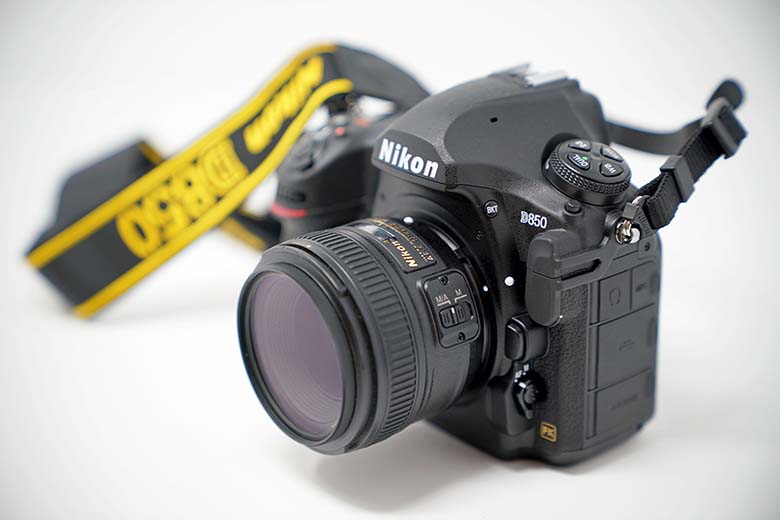With the evolution of technology, the line between professional and amateur gear has begun to get thinner. Point and shoot camera models have now reached a level where they offer superb quality photos.
Still, the quality of images you can get from DSLR cameras is on a whole different level that is simply hard to match. Whether you want to buy your first camera or upgrade the existing one and are curious about the Pros and Cons of a DSLR camera, then you are at the right place.
Dis-advantages of DSLR cameras:
- DSLR cameras are expensive due to their high-quality components and features.
- With a DSLR camera, you will need to invest more money in external flashes, extra lenses and a few other components for your camera system.
- DSLR cameras tend to be heavy and usually bulky in size, making them less portable than other camera types.
Advantages of DSLR cameras:
Custom Picture Controls
The unique feature of DSLR cameras, called by different names from different brands, such as Picture Controls (Nikon’s signature name) or Picture Styles (Canon’s signature name), is applied to every photo you capture. The otherwise RAW images coming off the sensor lack sharpness, contrast and colour saturation.
Those images are downright ugly. Your DSLR camera applies these changes to each picture to make them presentable. Many DSLR manufacturers offer custom picture settings so that the photos on the display screen look more like how they will look post-processing. This amazing feature helps the users to visualize the final image.
Multiple Exposure
Multiple exposures can get rather delightful for creative effects, and it is an often overlooked aspect of many DSLR cameras (it doesn’t come in all models). The multiple exposure feature lets the DSLR camera take two or more pictures in a row and then blend them to create one image.
For instance, you are shooting a runner sprinting down the track. You could set your camera to multiple exposure modes and lock it down on a tripod to add some hints of creative effect. Then take four images of the runner racing by, and your DSLR camera will merge them into an action sequence.
Time Lapse
Most Nikon DSLR cameras flaunt this feature (not present in Canon models). Under the time-lapse mode, your DSLR camera starts taking a photo every second or so.
Then, the DSLR merges these individual images (usually captured over 30 minutes or more) to create a fantastic video. On a Nikon DSLR camera, you can find this unique feature on the menu under the name “Interval timer shooting.”
Flash Compensation
Kindly do not confuse it with the exposure compensation feature. While using the Exposure compensation mode, the photographer lets the camera decide for the correct exposure, giving either darker or brighter pictures depending on exposure compensation settings.
Flash compensation also works on a similar line. The DSLR camera will decide how much flash output is required, and then the photographer can adjust the DSLR camera to either give less or more power to the flash according to the image look requirement of the photographer.
Depth-of-Field Preview
This unique DSLR camera feature is popular among experienced photographers. However, it is still the setting that many photographers are unaware of. The majority of DSLR cameras flaunt a small black button on the front side of the camera (camera left side).
If you glance through the viewfinder and tap the button, it will cause the display screen to go a bit darker, but it will benefit you by showing you how the depth-of-field will appear once you compose the picture.
Contrary to popular opinion, modifying the aperture setting on your DSLR camera does not instantly change the aperture in the lens. The aperture change comes into place only right before the photo is composed.
The reason behind this delay is to let your DSLR camera gather as much light as possible for focusing before the photograph is captured and give you extremely high-quality images.
We are confident that this guide will let you make a well-informed choice while shopping for a suitable DSLR camera for your needs. If you are delaying the purchase of your favourite Drone camera or DSLR camera due to budget constraints, then again, we are here to help. Keep reading to explore more.
Change the Way you Shop for your Brand New Cameras
Now, you can enjoy the benefits of the Bajaj EMI Network Card by making the payment of your shopping at 1.2 lakh+ stores in more than 2,900 cities across India. Other benefits of this new-age payment card include Zero down payment, pre-approved loan limit feature, No Cost EMIs, easy tenors ranging from 3 to 24 months, and much more.
Buy your latest budget-friendly DSLR camera online on EMI from the Bajaj Finserv EMI Network and get your device delivered to your doorstep without the burden of paying the total product cost at once.
Also read: DSLR vs Mirrorless Cameras Which Should You Buy and Why?
